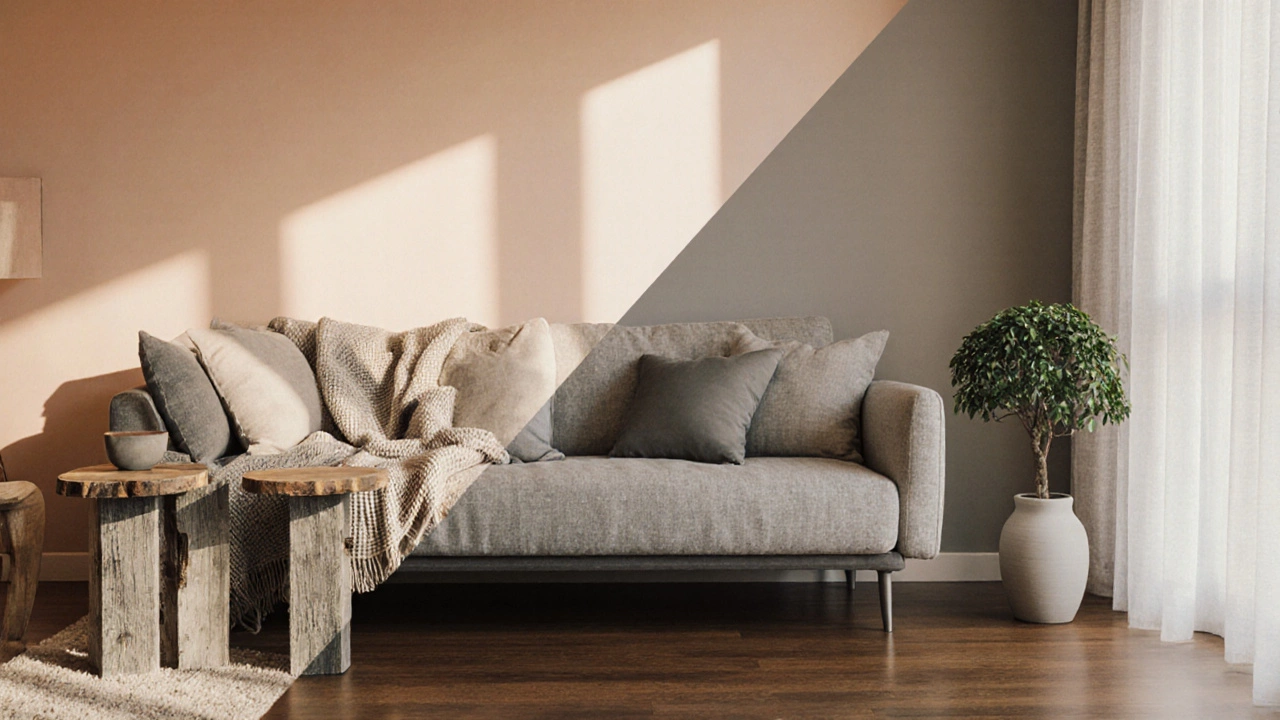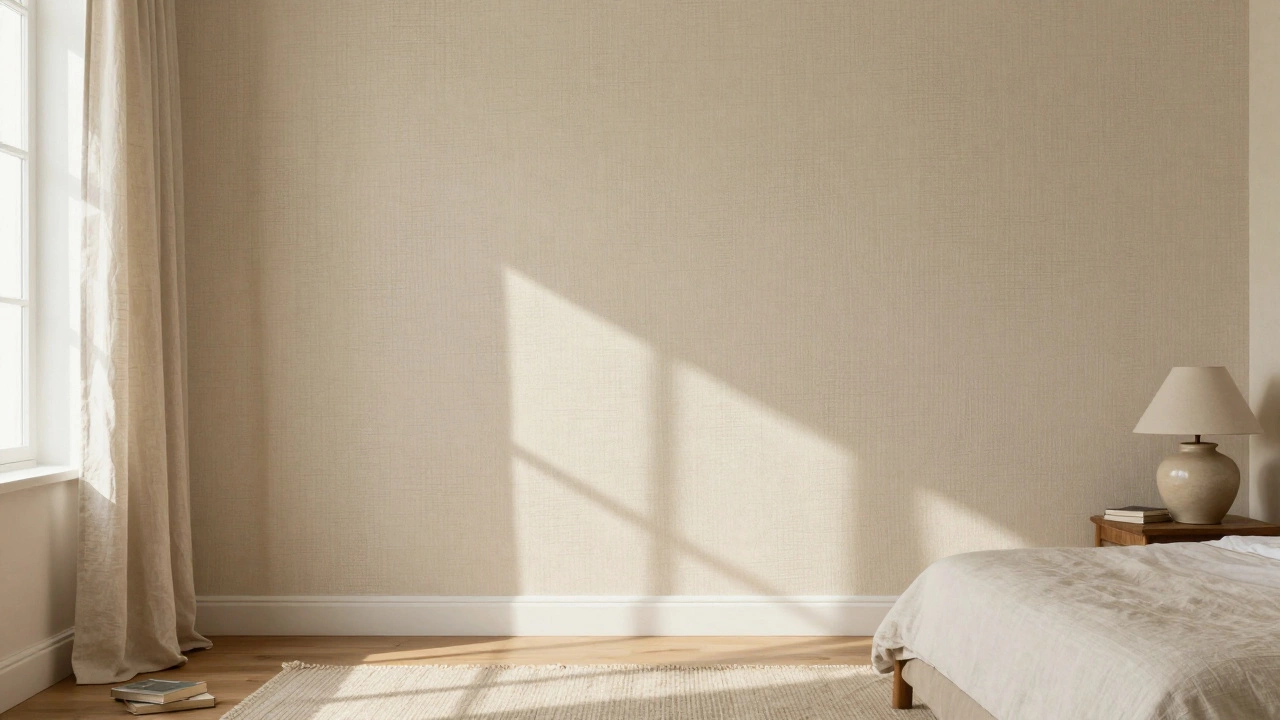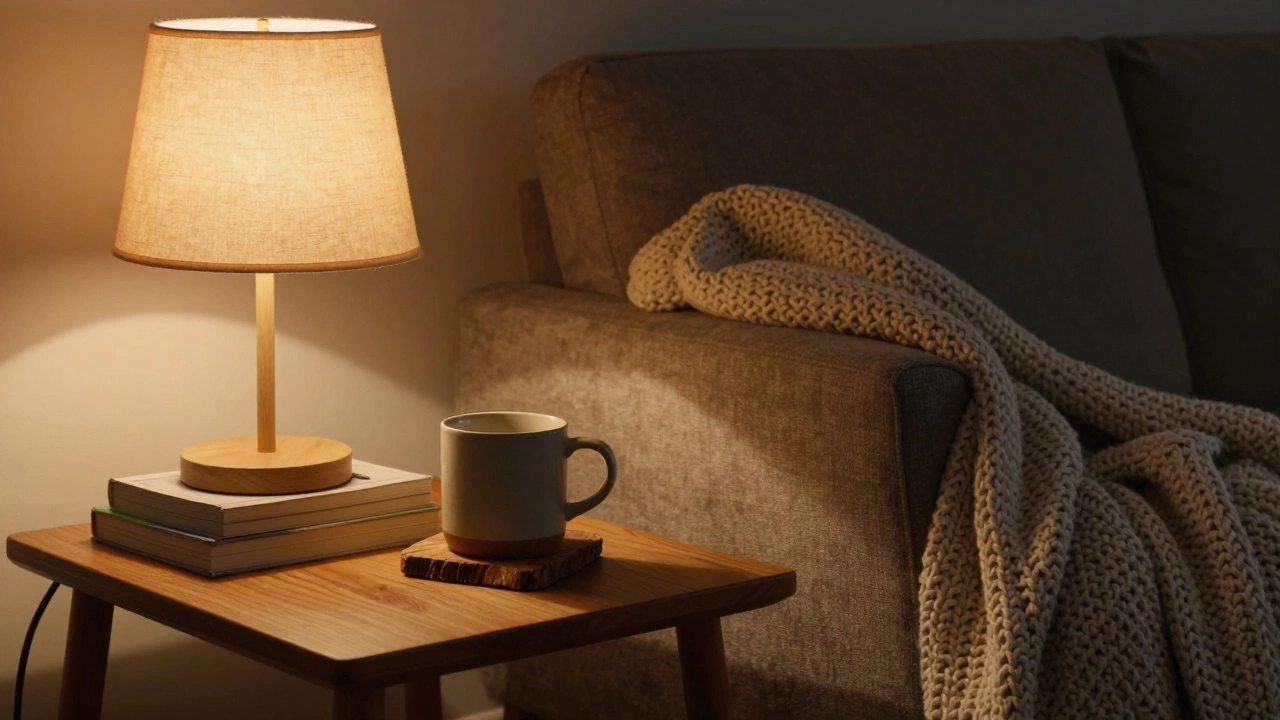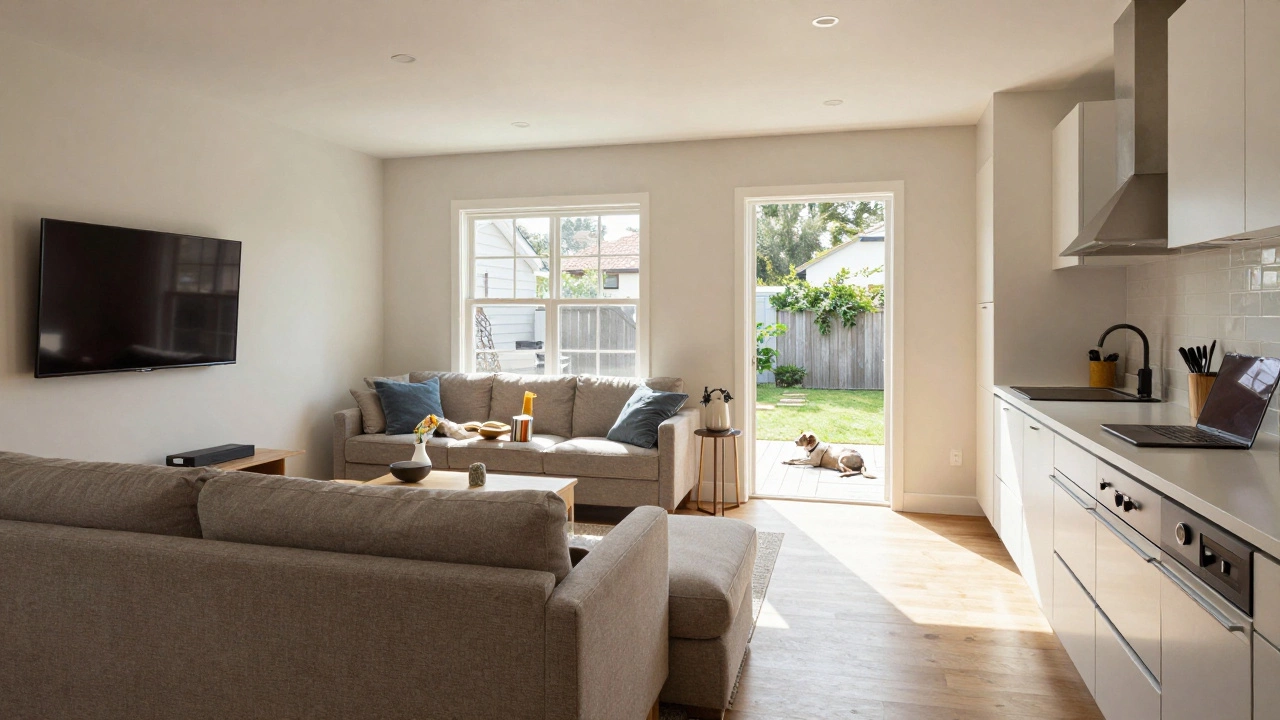Japandi Compatibility Score Calculator
Answer questions above to see your Japandi score
If you’ve been scrolling through Instagram lately, you might have noticed the farmhouse look fading out of the spotlight. The over‑stuffed sofas, distressed wood, and rustic accents that once dominated feeds are giving way to something sleeker, calmer, and oddly cozy. That newcomer? Japandi is a hybrid design language that blends Japanese minimalism with Scandinavian simplicity, focusing on functional beauty, natural materials, and a muted palette. In this guide we’ll break down why Japandi is stealing the limelight, how it differs from classic farmhouse décor, and exactly how you can start using it in your own home today.
Farmhouse Style: What Made It Popular?
Before we jump into the new trend, it’s worth understanding why the farmhouse aesthetic rose to fame. The style traces back to rural American homes of the 1800s, where practicality trumped polish. Key attributes include:
- Distressed or reclaimed wood - often painted white or left in a weathered gray.
- Large, comfy sofas with flannel or plaid throws.
- Metallic accents like barn doors, wrought‑iron lighting, and vintage signage.
- A color palette dominated by soft whites, creams, and muted blues.
These elements struck a chord because they felt welcoming and nostalgic, especially during periods when people craved comfort at home. The look was amplified by TV shows, Pinterest boards, and home‑improvement shows that marketed the “cozy country” vibe as attainable for city dwellers.
Why Farmhouse Is Losing Its Edge
Every design trend runs its course, and farmhouse is no exception. A few reasons it’s slipping:
- Over‑saturation. After years of endless reposts, the aesthetic feels repetitive. Audiences now crave fresh visual experiences.
- Shift toward sustainability. Distressed wood and over‑styled decor can waste resources. Homeowners are looking for responsibly sourced, longer‑lasting pieces.
- Desire for calm. Modern life is noisy; many people want spaces that feel like a mental reset, not a visual overload.
Enter a style that answers those concerns while still feeling warm and lived‑in: Japandi.
Introducing Japandi: The New Favorite
Japandi isn’t just a buzzword; it’s a philosophy. Japanese minimalism contributes an ethos of “less is more,” focusing on clean lines and purposeful objects. Scandinavian design adds warmth, natural light, and an emphasis on comfort. The result is a space that feels both serene and inviting - a perfect antidote to the cluttered farmhouse aesthetic.
Key attributes of Japandi include:
- Neutral, muted color schemes (soft grays, warm beiges, muted greens).
- High‑quality natural materials: solid wood (often oak, walnut, or bamboo), stone, and linen.
- Functional furniture with low profiles and straight legs.
- Thoughtful use of texture - think woven rugs, hand‑woven baskets, and matte ceramics.
The style also leans heavily on sustainable materials, encouraging the purchase of pieces that last decades rather than seasonal décor that gets tossed.
How Japandi Differs From Farmhouse and Scandinavian
| Aspect | Farmhouse | Scandinavian | Japandi |
|---|---|---|---|
| Color Palette | Soft whites, creams, pastel blues | Light neutrals, whites, blues, occasional black | Muted greys, warm beiges, olive greens |
| Material Focus | Reclaimed wood, metal, rustic fabrics | Light wood, natural fibers, glass | Solid wood, bamboo, stone, linen |
| Furniture Silhouette | Chunky, over‑stuffed, ornate | Low‑profile, sleek, functional | Low‐profile, straight‑legged, purposeful |
| Design Philosophy | Rustic nostalgia, comfort first | Functionality + simplicity + light | Minimalism meets warmth; “less but better” |
| Typical Accents | Barn doors, vintage signs, shiplap | Geometric patterns, pendant lighting | Hand‑crafted ceramics, woven baskets, bonsai |
While Scandinavian design shares Japandi’s love for light and function, Japandi adds the Japanese principle of intentionality and deeper respect for natural textures. Farmhouse, on the other hand, leans into ornamentation and a warm, lived‑in vibe that can feel busy compared to Japandi’s clean lines.
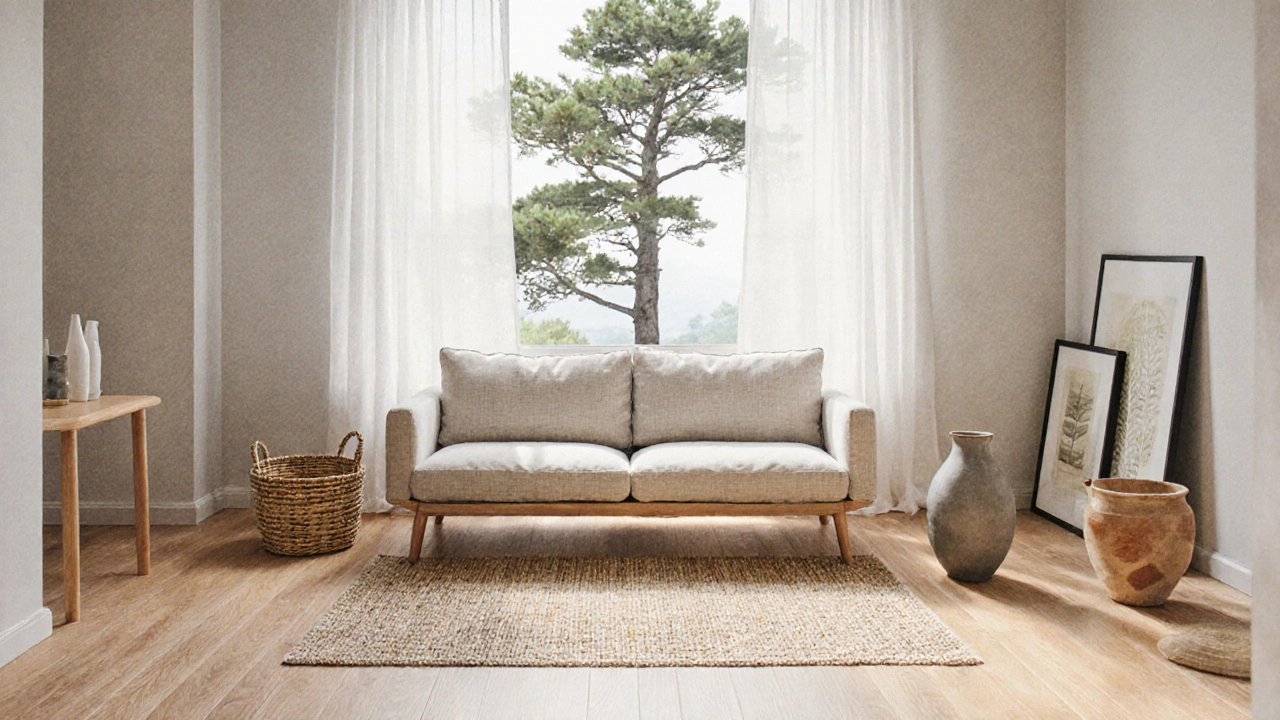
Step‑by‑Step: Decorating Your Home with Japandi
- Start with a neutral canvas. Paint walls in soft greys or warm beiges. Avoid bold accent walls; instead play with texture.
- Choose solid‑wood flooring. Light oak works beautifully. If you prefer a darker tone, walnut adds depth without overwhelming the space.
- Select low‑profile furniture. Look for sofas with straight legs, simple linen upholstery, and minimal detailing. A Japanese‑style platform table pairs well with a Scandinavian lounge chair.
- Introduce natural textures. Add a woven jute rug, linen curtains, and a hand‑woven bamboo basket. These items bring tactile warmth without clutter.
- Incorporate green. A few potted plants-like a snake plant or a small bonsai-create a biophilic link, echoing Biophilic design trends.
- Mindful accessorizing. Choose a few statement pieces: a stoneware vase, a matte black lamp, or a simple wooden art panel. Less is more; each item should have purpose.
- Focus on lighting. Maximize natural light with sheer curtains, then layer with warm LED fixtures that mimic the gentle glow of Japanese paper lanterns.
Follow these steps and you’ll have a living room that feels spacious, calm, and thoughtfully curated-a stark contrast to the cosy‑but‑cluttered farmhouse look.
Buying Guide: Materials and Brands to Trust
Investing in quality is key to Japandi’s longevity. Here are some material picks and brands that consistently deliver:
- Wood: Look for FSC‑certified oak, walnut, or bamboo. Brands like West Elm and IKEA (especially their Hemma line) have solid‑wood pieces that fit the style.
- Textiles: Linen from Glen Raven or organic cotton throws from Coyuchi maintain the natural look.
- Ceramics & Accessories: Japanese pottery studios such as Hasami Porcelain produce simple, matte pieces that align perfectly with Japandi.
- Lighting: Minimalist fixtures from HAY or handcrafted paper lanterns from Muuto blend function and warmth.
When choosing pieces, ask yourself: “Does this item serve a purpose, and does it add quiet beauty?” If the answer is yes, you’re on the right track.
Common Mistakes to Avoid
- Over‑decorating. Japandi thrives on restraint. Too many accessories dilute the calm.
- Ignoring scale. Low‑profile furniture should sit low to the floor. Oversized sofas or tables break the visual flow.
- Choosing the wrong colors. Bright reds or heavy charcoal can overpower the muted palette.
- Using cheap, synthetic materials. Plastic finishes clash with the organic feel of wood and linen.
Keeping these pitfalls in mind will help you maintain the serene vibe that makes Japandi so appealing.
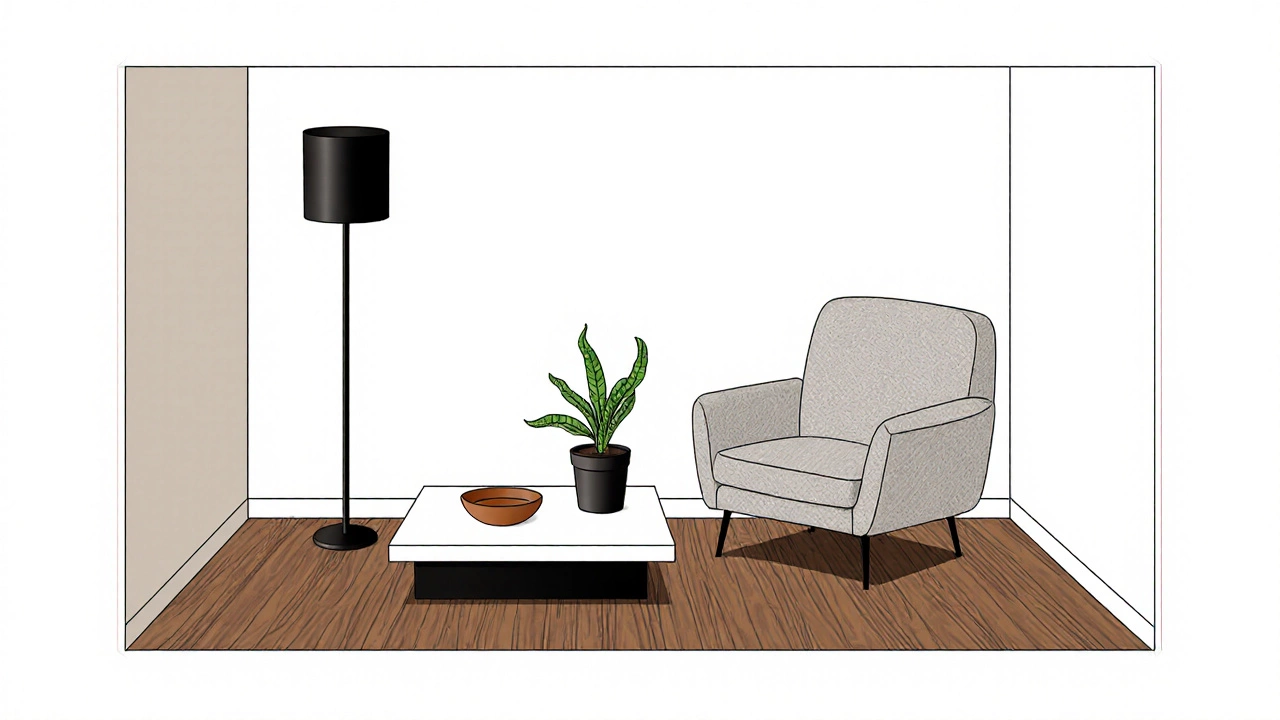
What’s Next for Home Interiors?
Design trends are cyclical, but the shift toward intentional, sustainable living seems here to stay. As more consumers prioritize mental well‑being and ecological impact, styles like Japandi-rooted in simplicity and natural materials-are likely to dominate the market for years to come. Expect to see more hybrid concepts (think “Scandi‑Industrial” or “Nordic‑Boho”) that borrow Japandi’s core principles while adding new cultural twists.
Quick Takeaways
- Farmhouse décor is fading due to oversaturation and a desire for calmer, more sustainable spaces.
- Japandi decor merges Japanese minimalism with Scandinavian warmth, delivering a muted palette, natural materials, and purposeful design.
- Start with neutral walls, solid‑wood floors, low‑profile furniture, and a few high‑quality natural accessories.
- Choose FSC‑certified wood, linen, and handcrafted ceramics to stay true to the style.
- Avoid clutter, oversized pieces, loud colors, and cheap plastics.
Frequently Asked Questions
What exactly is Japandi?
Japandi is a hybrid interior design style that combines the clean, minimalist ethos of Japanese design with the warm, functional simplicity of Scandinavian interiors. It emphasizes muted colours, natural materials, and purposeful decor.
How does Japandi differ from traditional Scandinavian design?
While both value simplicity, Scandinavian design often leans lighter and brighter, using more white and airy spaces. Japandi adds Japanese restraint, deeper earth tones, and a stronger focus on natural textures like bamboo and stone.
Can I mix farmhouse pieces with Japandi?
It's possible, but you need to be selective. Choose farmhouse items that share natural wood or neutral tones and avoid overly ornate, distressed pieces that clash with Japandi’s clean lines.
What colours work best for a Japandi living room?
Soft greys, warm beiges, muted olive greens, and gentle taupes create the calming backdrop Japandi thrives on. Accent with natural wood tones or subtle black for contrast.
Is Japandi suitable for small apartments?
Absolutely. Its low‑profile furniture and minimalist approach help small spaces feel airy and organized, making it ideal for apartments where clutter can quickly become overwhelming.
Where can I find authentic Japanese ceramics for Japandi décor?
Brands like Hasami Porcelain, Noritake, and local artisanal studios specialize in minimalist, matte-glazed pieces that complement Japandi interiors.
How do I keep Japandi interiors sustainable?
Choose FSC‑certified wood, organic linen, and low‑VOC finishes. Invest in timeless pieces rather than fast‑fashion décor, and consider second‑hand or vintage finds that meet the material standards.

